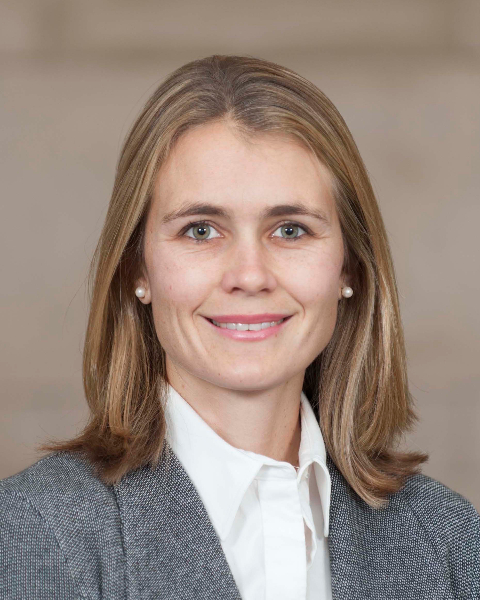SS 31 - Breast Cancer 3: Toxicity
278 - A Virtual Program for Fatigue among Women Undergoing Radiation Treatment: Results from a Randomized Controlled Basket Trial
Tuesday, October 1, 2024
12:55 PM - 1:05 PM ET
Location: Room 207

Erin Gillespie, MD, MPH
University of Washington-Fred Hutchinson Cancer Center
Seattle, WASHINGTON
Presenter(s)
E. F. Gillespie1, S. Silverwood1, K. L. Bryl2, N. P. Verdini3, K. Lapen3, R. E. Baser4, A. J. Khan3, and J. J. Mao2; 1Department of Radiation Oncology, University of Washington, Seattle, WA, 2Integrative Medicine Service, Memorial Sloan Kettering Cancer Center, New York, NY, 3Department of Radiation Oncology, Memorial Sloan Kettering Cancer Center, New York, NY, 4Department of Epidemiology and Biostatistics, Memorial Sloan Kettering Cancer Center, New York, NY
Purpose/Objective(s): Based on emerging clinical trial evidence, national guidelines recommend using non-pharmacological treatments such as fitness and mind-body interventions to reduce cancer-related fatigue, but substantial barriers to implementation exist. Telemedicine offers a scalable approach to address this gap, but clinical efficacy data are lacking. We hypothesized that Integrative Medicine @ Home (IM@Home), a virtual mind-body and fitness program, would reduce fatigue among patients undergoing breast radiation as part of a basket trial; we also assessed patient perceptions of facilitators and barriers. Materials/
Methods: A prospective randomized clinical trial with a mixed methods design was conducted among patients with cancer reporting moderate or greater fatigue during treatment (NCT05053230). Participants in the breast radiation basket were randomly assigned in a 1:1 ratio to IM@Home, which provided over 23 weekly live virtual mind-body and fitness classes, or enhanced usual care (EUC), which offered access to pre-recorded meditation resources. The primary outcome, fatigue, was measured using the Brief Fatigue Inventory (BFI) over 12 weeks. Other patient-reported outcomes included Insomnia Severity Index, Edmonton Symptom Assessment Scale (ESAS), and Hospital Anxiety and Depression Scale (HADS). Statistical analysis included linear mixed models to compare group differences over time. Semi-structured qualitative interviews were conducted among participants and thematic content analysis was employed.
Results: Among 73 patients enrolling with breast cancer, mean age was 54.1 years and 67% were non-Hispanic white. Thirty-five patients were randomly assigned to IM@Home and 38 to EUC. At week 12, patients in the IM@Home group had significantly less total fatigue compared to those in the EUC group (2.06 vs 2.79, p=0.009). Additionally, compared to EUC, patients in the IM@Home group showed greater reductions across the 12-week follow-up period in insomnia (p=.005), ESAS physical symptoms (p=0.007), and HADS depression (p=0.04), but not in ESAS emotional distress (p=0.10) or HADS anxiety (p=0.14). Urgent care use was low in both groups and did not differ between IM@Home and EUC (0/35 vs 1/38, respectively p=0.99). Patient interviews (n=12) cited benefits of remote access, variety of class intensity and type, social connectivity with other participants and instructors, and added structure to their daily routine. Barriers included inconvenient class schedule and difficulties navigating the program’s website.
Conclusion: The IM@Home program significantly reduced fatigue and co-morbid insomnia and depression among women with breast cancer undergoing radiation. Future research should explore mechanisms (i.e. physical activity and psychosocial factors), while evaluating scalability to more diverse settings.
Purpose/Objective(s): Based on emerging clinical trial evidence, national guidelines recommend using non-pharmacological treatments such as fitness and mind-body interventions to reduce cancer-related fatigue, but substantial barriers to implementation exist. Telemedicine offers a scalable approach to address this gap, but clinical efficacy data are lacking. We hypothesized that Integrative Medicine @ Home (IM@Home), a virtual mind-body and fitness program, would reduce fatigue among patients undergoing breast radiation as part of a basket trial; we also assessed patient perceptions of facilitators and barriers. Materials/
Methods: A prospective randomized clinical trial with a mixed methods design was conducted among patients with cancer reporting moderate or greater fatigue during treatment (NCT05053230). Participants in the breast radiation basket were randomly assigned in a 1:1 ratio to IM@Home, which provided over 23 weekly live virtual mind-body and fitness classes, or enhanced usual care (EUC), which offered access to pre-recorded meditation resources. The primary outcome, fatigue, was measured using the Brief Fatigue Inventory (BFI) over 12 weeks. Other patient-reported outcomes included Insomnia Severity Index, Edmonton Symptom Assessment Scale (ESAS), and Hospital Anxiety and Depression Scale (HADS). Statistical analysis included linear mixed models to compare group differences over time. Semi-structured qualitative interviews were conducted among participants and thematic content analysis was employed.
Results: Among 73 patients enrolling with breast cancer, mean age was 54.1 years and 67% were non-Hispanic white. Thirty-five patients were randomly assigned to IM@Home and 38 to EUC. At week 12, patients in the IM@Home group had significantly less total fatigue compared to those in the EUC group (2.06 vs 2.79, p=0.009). Additionally, compared to EUC, patients in the IM@Home group showed greater reductions across the 12-week follow-up period in insomnia (p=.005), ESAS physical symptoms (p=0.007), and HADS depression (p=0.04), but not in ESAS emotional distress (p=0.10) or HADS anxiety (p=0.14). Urgent care use was low in both groups and did not differ between IM@Home and EUC (0/35 vs 1/38, respectively p=0.99). Patient interviews (n=12) cited benefits of remote access, variety of class intensity and type, social connectivity with other participants and instructors, and added structure to their daily routine. Barriers included inconvenient class schedule and difficulties navigating the program’s website.
Conclusion: The IM@Home program significantly reduced fatigue and co-morbid insomnia and depression among women with breast cancer undergoing radiation. Future research should explore mechanisms (i.e. physical activity and psychosocial factors), while evaluating scalability to more diverse settings.
